Change Language :
iglide® A290 - Material data
Materials table
General features
Unit
iglide® A290
Test method
Density
g/cm³
1,41
Color
White
Max. moisture absorption at 73° F / 50% R. H.
% weight
1,7
DIN 53495
Max. moisture absorption
% weight
7,3
Coefficient of surface friction, dynamic, against steel
µ
0,13 - 0,40
p x v value, max. (dry)
psi x fpm
6,600
Mechanical properties
Modulus of elasticity
psi
1,276,000
DIN 53457
Tensile strength at 68° F
psi
36,260
DIN 53452
Compressive strength
psi
13,200
Permissible static surface pressure (68° F)
psi
10,150
Shore D hardness
88
DIN 53505
Physical and thermal properties
Upper long-term application temperature
°F
284
Upper short-term application temperature
°F
356
Lower application temperature
°F
-40
Thermal conductivity
[W/m x K]
0,24
ASTM C 177
Coefficient of thermal expansion (at 73°F)
[K-1 x 10-5 ]
7
DIN 53752
Electrical properties
Specific volume resistance
Ωcm
> 1011
DIN IEC 93
Surface resistance
Ω
> 1011
DIN 53482
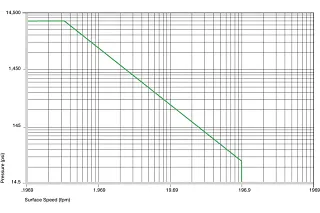
Permitted p x v values
For iglide® A290 plastic bushings running dry against a steel shaft, at 68° F.
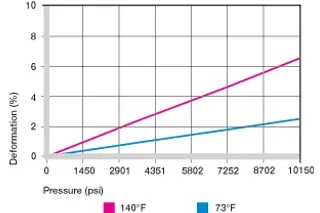
Figure 9.2: Deformation under load and temperatures
Surface pressure
iglide® A290 plastic bushings are an advanced development for the use in food and pharmaceutical industry. Compared to the bushings made of iglide® A200, the tribological properties could be significantly improved.
iglide® A290 plastic bushings have a recommended maximum surface pressure of 10,150 psi. At this load, the deformation at room temperature is only 2.5%. A plastic deformation is close to zero up to this load. However, it is also affected by the cycle time.
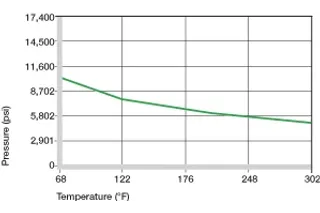
Figure 9.3: Maximum recommended surface pressure dependent on the temperature
Temperatures
The short-term permitted maximum temperature is 356° F.
With increasing temperatures, the compressive strength of iglide® A290 plastic bushings decreases. The diagram 9.3 clarifies this connection.
The temperatures prevailing in the bushing system also have an influence on the bushing wear. The wear increases with rising temperatures, and the influence is especially marked from 248° F temperature onwards.
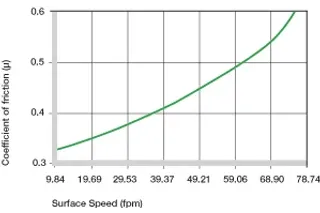
Figure 2.4: Coefficients of friction dependent on the surface speed, p = 108 psi
Friction and wear
The coefficient of friction alters like the wear resistance with increasing load and surface speed.. With increasing speed and constant load, the coefficient of friction steadily rises. In contrast a reverse behavior is noticed at increasing load and constant speed (see Figures. 9.4 and 9.5) Friction and wear depend to a high degree on the reverse partner. Very smooth shafts increase the coefficient of both friction and wear. iglide® A290 proves to be relatively insensitive to shaft surfaces and retains a 0.4 friction coefficient µ with average surface finishes of Ra = 0.4 to 1.6 µm.
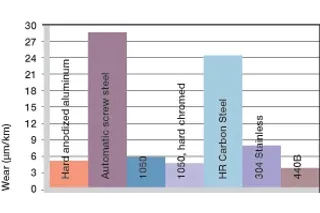
Fig. 2.7: Wear, rotating application with different shaft materials, load p = 108 psi, v = 98 fpm
Shaft materials
The graph displays a summary of the results of tests with different shaft materials conducted with plastic bushings made of iglide® A290.
Compared to iglide® A200, the improved tribological properties of iglide® A290 are also reflected in the coefficients of wear. At low loads, the differences in the wear resistance of the combinations of iglide® A290 with different shaft materials are very distinct. Figure 9.8 shows that the advantage of hard-chromed shafts increases with rising load. This counter partner is also well-suited for pivoting applications and are frequently found in packaging machines. Other hardened surfaces are also recommended for oscillating movements, for example 1050 hardened and ground steel.
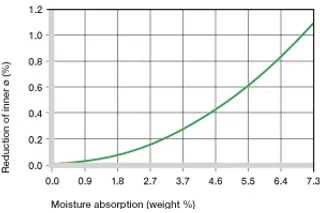
Figure 9.10: Influence of moisture absorption of iglide® A290 plastic bushings
Radioactive rays
iglide® A290 plastic bushings are radiation resistant up to a radioactive intensity of 3 x 10² Gy.



